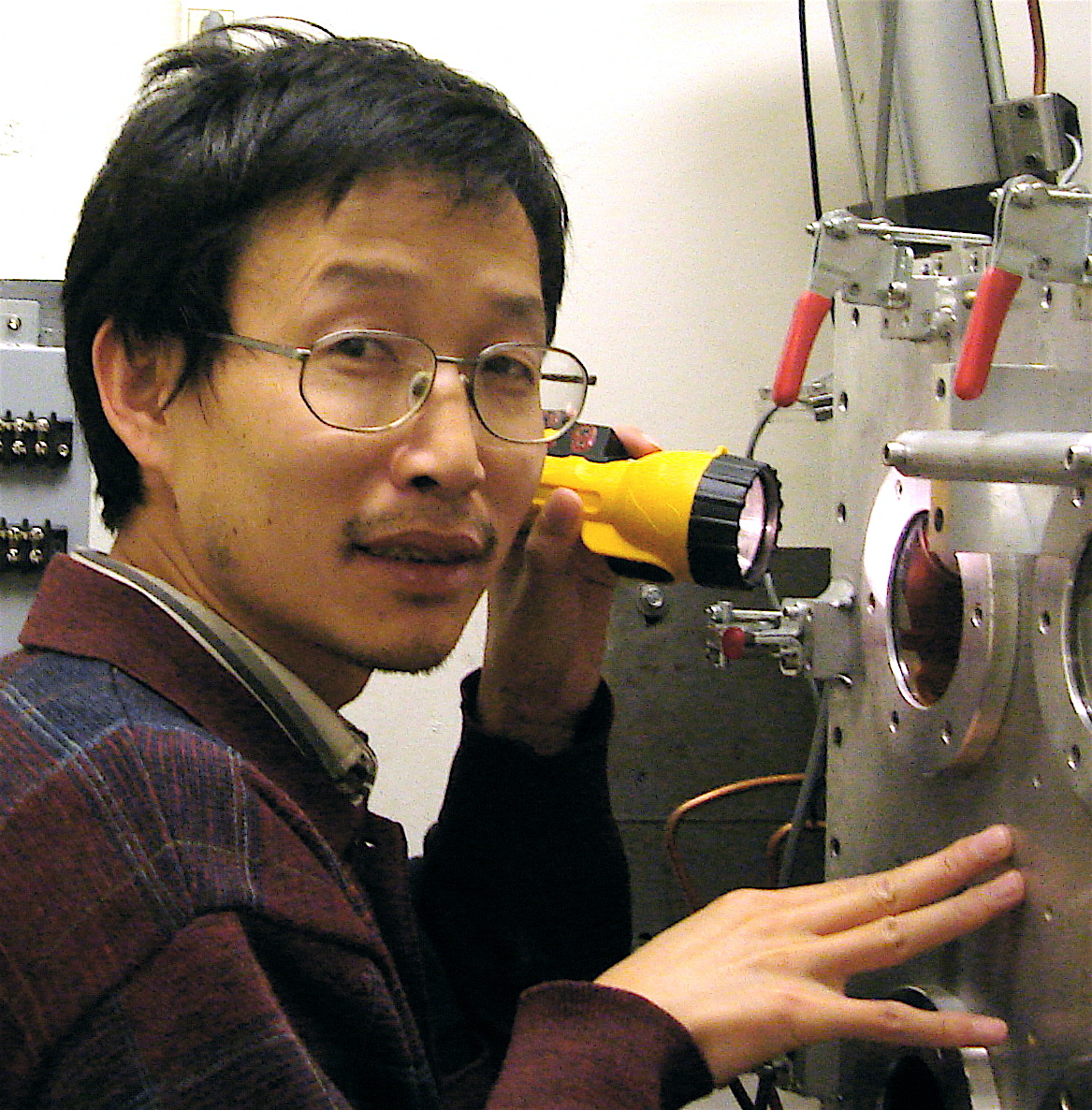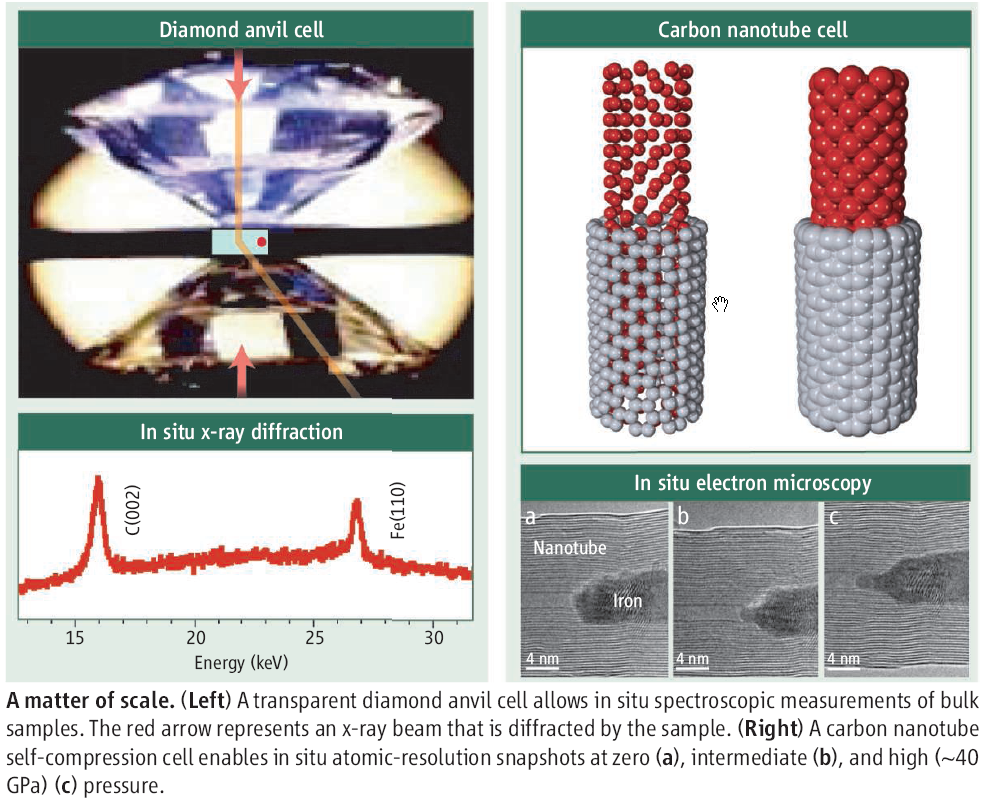X-RAY RUNS: Apply for Beamtime
2017 Nov 1 - Dec 21
2018 Feb 7 - Apr 3
2018 Proposal/BTR deadline: 12/1/17
2018 Apr 11 - Jun 4
2018 Proposal/BTR deadline: 2/1/18
Contact: E. Fontes (ef11@cornell.edu)
Ithaca, NY - Dr. Zhongwu Wang was appointed to the position of staff scientist at the Cornell High Energy Synchrotron Source (CHESS) on September 1, 2006. He comes to the lab as an experienced “user” of the facility and takes over as the leader of the high-pressure sciences program. He also becomes the lead station scientist for the B1 and B2 experimental stations.
Wang is a native of Anyang, Henan, China and was educated through a Masters degree at the Chinese Academy of Science. He carried out work towards a Ph. D. degree at Uppsala University (Sweden) and Florida International University, and received his degree from Florida working in the group of Professor S. K. Saxena. He then spent two years as a Director’s funded post doctoral associate at Los Alamos National Laboratory with Dr. Yusheng Zhao and Dr. Alan Hurd. Wang replaces Dr. C.-S. Zha. Zha was a staff scientist at CHESS for eight years before returning to the high-pressure sciences program at the Carnegie Institute in Washington.

Dr. Zhongwu Wang
examines the x-ray optics
for the B2 experimental
station.
Over the past few years Wang had been a regular user of CHESS. Several of his recent publications were notable research highlights. A 2004 paper announced “A quenchable superhard carbon phase synthesized by cold compression of carbon nanotubes.” During this experiment, the diamond-anvil cell (DAC) specimen holder was damaged by the compressed carbon nanotube phase, showing how the new phase was harder than diamond! A 2005 report “Morphology tuned wurtzite-type ZnS nanobelts” told how the stability of ribbon-shaped nanostructures depends on their dimensions, as well as the pressure at which they are produced. This understanding may lead to better methods of making nanobelts for electronic and optical devices. In a 2006 Perspectives article in Science, “High pressure microscopy,” Wang and Zhao discuss how carbon nanotube “pressure cells” hold the potential for scientists to watch atomic-scale rearrangements during phase transformations, and to deduce the driving mechanisms for these processes. These insights will help optimize the synthesis of novel functional materials and tuning the properties of nanometer-scale crystals and composites. Nanotubes may also yield new ways to achieve ultra-high pressures in the laboratory.

[Figure from Wang and Zhao, Science, Vol 312,
26 May 2006, page 1149]
As the CHESS high-pressure scientist Wang takes on the role of beamline scientist for high-pressure experiments at the B1 and B2 stations. B1 is a white-beam station instrumented for Energy-Dispersive X-ray diffraction (EDX), a technique used commonly for rapid measurement of crystal structures and solid phase determination. The B2 station has an energy tunable monochromatic beam and is used routinely for high-resolution Angle-Dispersive X-ray diffraction (ADX) from powder or single-crystal specimens. Over the past few years these two stations have hosted 25 unique principal investigator groups with 57 active research projects.
CHESS is currently working on a long term proposal to upgrade the current x-ray source to a new type of “Energy Recovery Linac”, or ERL, that will produce x-ray beams brighter and smaller than those from current storage ring sources. Wang is helping to shape these proposals, and hence the future scientific directions of the laboratory.
For the next few years he envisions working on a wide range of topics in high-pressure materials physics, synthesis of novel materials, pressure induced phenomena and underlying mechanisms. These include continued studies of exotic phases of carbon, such as carbon nanotubes, and work to develop nanotube technology and techniques. This work will involve high pressure melting measurements and modeling, study of phase transformations, and determination of equations-of-state (EOS) of materials found in the Earth's lower mantle and core-mantle boundary. In terms of pure materials science, his interests include superhard materials, nanotechnology, energetic and future energy materials, and the state of carbon under cosmic ray conditions.
Wang foresees that an ERL source will greatly enhance measurement capabilities for high-pressure science. Diamond anvil cell experiments are frequently photon starved, even at the brightest existing sources. The nanometer-sized x-ray beams from the ERL will focus more photons onto smaller specimens inside tiny diamond-cell volumes. Smaller x-ray beams, coupled with high-performance DAC or nanotube vessels, will enable scientists to perform a wide range of in-situ spectroscopic measurements at extreme pressure and temperature conditions. Wang sees both challenges and potential gains and expects that expanding the number and quality of in-situ x-ray probes will continue to attract users, from academia, national laboratories, and industry, interested in novel biomaterials, energetic materials, and nanotechnology.
The CHESS staff and user community welcome Dr. Zhongwu Wang and look forward to a continued, creative program in high-pressure science.
References in text:
Wang, Z. W., Zhao, Y. S., Tait, K., Liao, X. Z., Schiferl, D., Zha, C. S., Downs, R. T., Qian, J., Zhu, Y. T., and Shen, T. D.; "A Quenchable Superhard Carbon Phase Synthesized by Cold Compression of Carbon Nanotubes", Proceedings of the National Academy of Sciences of the United States of America 2004, 101, (38), 13699-13702.
Wang, Z. W., Daemen, L. L., Zhao, Y. S., Zha, C. S., Downs, R. T., Wang, X. D., Wang, Z. L., and Hemley, R. J.; "Morphology-tuned Wurtzite-type ZnS Nanobelts", Nature Materials 2005, 4, (12), 922-927.
Wang, Z. W., and Zhao, Y. S.; "High-pressure Microscopy", Science 2006, 312, (5777), 1149-1150.
